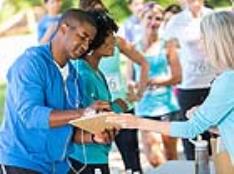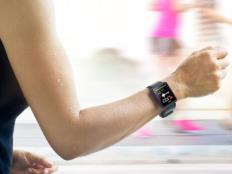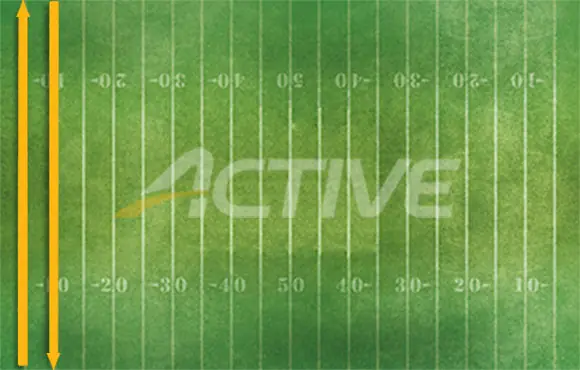Hip Thrusts
Muscle groups emphasized: Hips, glutes, lower back and hamstrings
Value for runners: This exercise dynamically targets the hamstrings, glutes, lower back and hips (the posterior chain) to help prevent injury when introducing speed work into your training plan.
Logistics: Perform 15 to 25 repetitions each leg
Instructions: At the top of the movement, your body should be in a straight line from your knee to your head. Beginners can thrust with both feet on the ground or one foot on the ground while advanced runners can rest one foot on a medicine or Swiss ball for an extra balance challenge.
More: Hip Strengthening and Mobility Exercises for Runners
Theraband Balance Drill
Value for runners: This exercise will improve your balance and foot strike, and strengthen your abductors. This is especially useful for runners who suffer from excessive leg crossover.
Instructions: Focus on balance and keeping the leg attached to the theraband and perpendicular to the ground (not tilting inwards). Advanced runners can stand on a balance board or close their eyes for added difficulty. Perform 15 to 25 repetitions on each leg.
More: Must-Do Core, Glute and Hamstring Exercises for Runners
Side Plank
Figure 1
Muscle groups emphasized: transverse abdominus, gluteus medius and gluteus minimus muscles (abductors), the adductor muscles of the hip, and the external and internal obliques
Value for runners: The obliques, adductors and abductors help stabilize the hips, and prevent an excessive twisting motion. The side plank helps prevent injuries to the hip and the IT band, and also corrects possible hip drop problems.
Logistics: Hold the side plank position for up to 60 seconds.
Instructions: Like the front plank, do not let your hips bend towards the ground or point towards the air. There should be a straight line down from your head to your feet. Beginning runners can balance on their hands instead of their elbows (see Figure 1 above). Advanced runners can lift their top leg off the ground.
More: 2 Plank Variations to Build a Strong Core
These exercises will help get you started on building a stronger foundation, avoiding injury, and improving performance.
If you need help developing and implementing a full strength training routine to decrease injury and improve performance, check out the Runners Connect Strength Training for Runners Program. It includes specific strength training prescriptions for every race distance from 5K to the marathon, 18 progressive routines, injury prevention protocols and much more.
Works Cited
Niemuth, P. E.; Johnson, R. J.; Myers, M. J.; Thieman, T. J., Hip Muscle Weakness and Overuse Injuries in Recreational Runners. Clinical Journal of Sports Medicine 2005, (15), 14-21.
Ireland, M. L.; Willson, J. D.; Ballantyne, B. T.; Davis, I. S., Hip Strength in Females With and Without Patellofemoral Pain. Journal of Orthopaedic & Sports Physical Therapy 2003, (33), 671-676.
Fredericson, M.; Cookingham, C. L.; Chaudhari, A. M.; Dowdell, B. C.; Oestreicher, N.; Sahrmann, S. A., Hip Abductor Weakness in Distance Runners with Iliotibial Band Syndrome. Clinical Journal of Sports Medicine 2000, (10), 169-175.
More: How to Become a Better Runner: 8 Exercises for the Hips, Glutes and Hamstrings
 Sign up for your next race.
Sign up for your next race.- 4
- of
- 4
About the Author
Get ACTIVE on the Go


Couch to 5K®
The best way to get new runners off the couch and across the finish line of their first 5K.
Available for iOS | Android






Discuss This Article